Build Design Systems With Penpot Components
Penpot's new component system for building scalable design systems, emphasizing designer-developer collaboration.

medium bookmark / Raindrop.io |
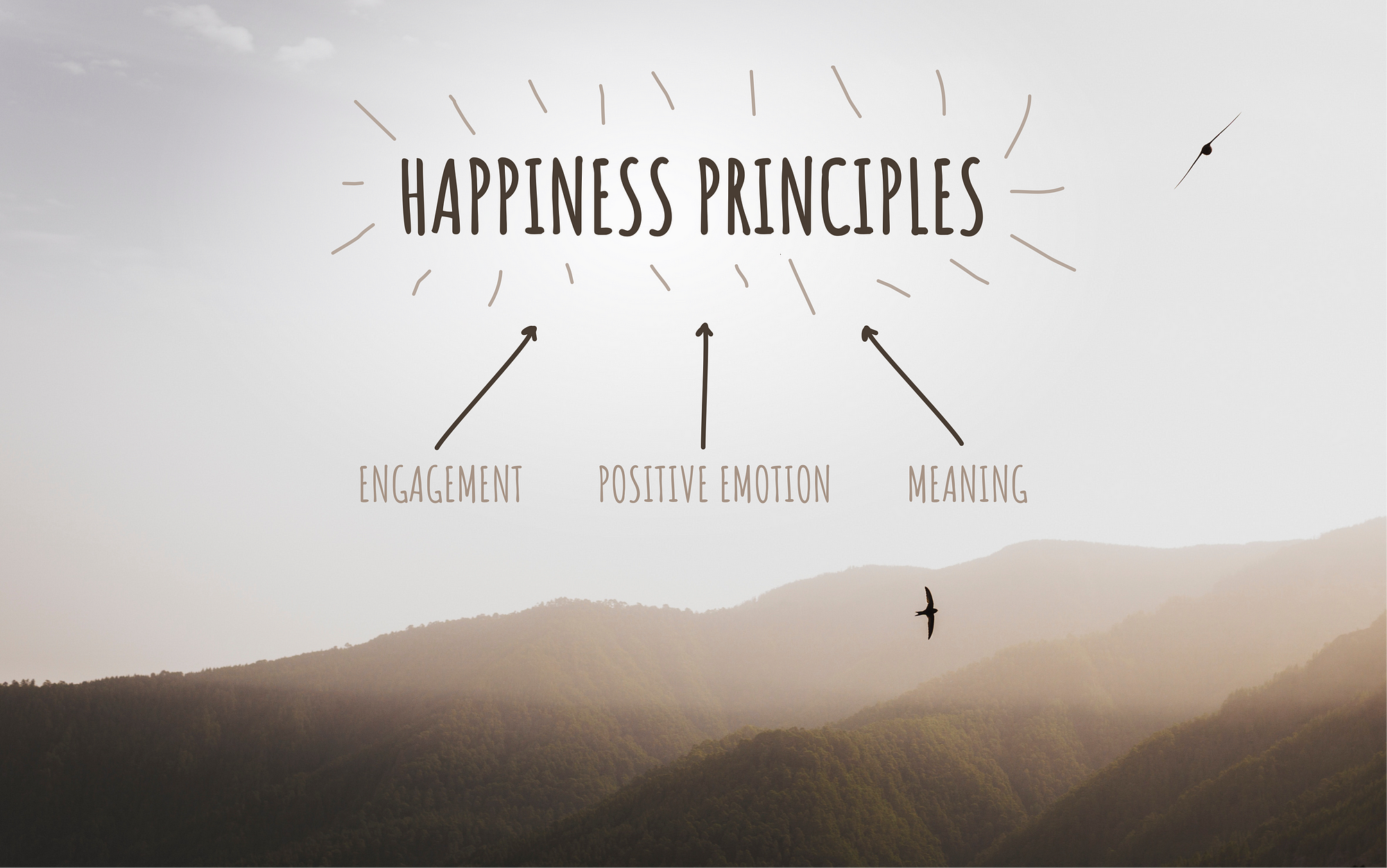
I’ve set out to hack happiness with design thinking. This is a follow up post to “Hacking happiness with design thinking” where you can read more about the origins of this project.
The first step of The Meaningful Action Project is to discover what your “Happiness Principles” are. We’ll identify the things that engage you, give you positive emotion and what is meaningful to you. You can learn why we’re focusing on those things here. We’ll then combine these elements into groups and define your happiness principles. These principles will be the foundation for the rest of the activities in this process.
This is a process. Please don’t feel like you need to do the entire activity in one sitting. Take your time and enjoy the process. If you can’t do the whole thing right now, sign up at the bottom of this article to have the instructions emailed to you.
You’re going to need a few things before we get started.
Alright, let’s get to work!
Time required: 30–60 minutes
Create 4 separate piles of index cards (7 in each group). For each group of 7, you’re going to finish a statement:

I felt happy when…
Don’t overthink this one. It’s really just about exploring when and how you experience positive emotions. “Happy” can be replaced with joy, love, interest, serenity, awe, amusement, gratitude, etc.
I lost myself in my moment when…
Think about times when the following quotes apply. “I am totally involved in what I am doing. My body feels good. I don’t seem to hear anything. The world seems to be cut off from me. I am less aware of myself and my problems.” (From “On the Measurement and Conceptualization of Flow” by Giovanni B. Moneta, page 25)
I did _____ because it’s meaningful.
Think of times you’ve done something for yourself or others that felt meaningful. Maybe it wasn’t immediately enjoyable but you feel it contributes to a larger purpose.
I felt accomplished after…
Think of times in the past when you accomplished something important (big or small) and felt proud. These are things that involve struggle, failure and determination. The actual act of doing it may have been painful but the end result was positive.
It’s OK if you can’t come up with 7 answers for each of these statements. Just do your best and set the blank cards aside. If you have leftover cards from one question, go ahead and use them for a different question if you have more to write down.
Also, remember to focus on past experiences. Your future self doesn’t exist yet. Rely on how YOU have felt in the past.
Ok, go for it. I’ll wait here.
Time required: 5–10 minutes
Now, you’re going to apply a quantitative measure to each card you wrote. This is a bit subjective, so don’t worry if you have a bit of trouble here. Just go with your gut.
On the bottom of each card, give it a score from 1–3. Use the guide below to help determine each card’s score.
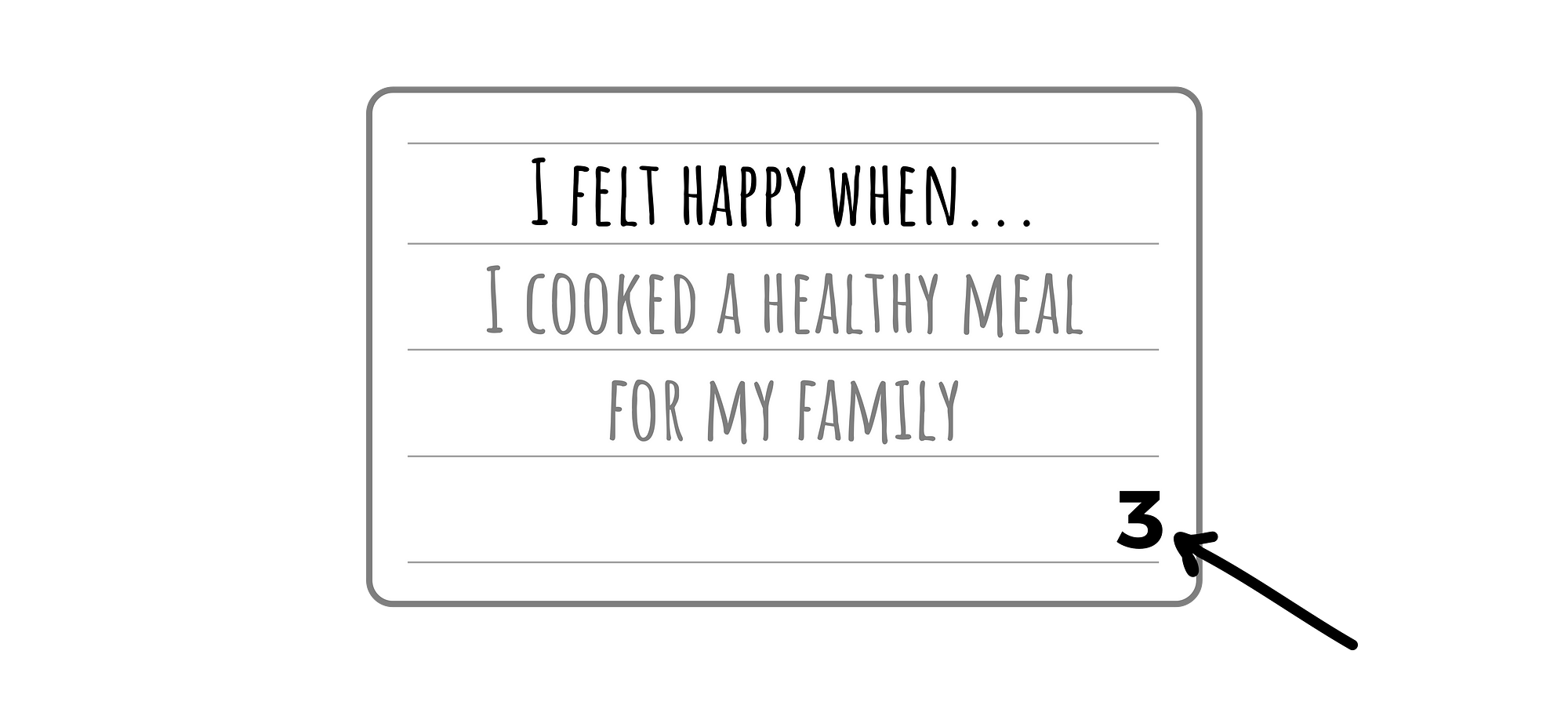
“I felt happy when…”
1 = I felt moderately happy
2 = I felt happy
3 = I felt very happy
“I lost myself in the moment when…”
1 = I was moderately engaged
2 = I was engaged
3 = I was very engaged
“I did _____ because it’s meaningful.”
1 = I feel this activity is moderately meaningful
2 = I feel this activity is meaningful
3 = I feel this activity is very meaningful
“I felt accomplished after…”
1 = I felt moderately accomplished
2 = I felt accomplished
3 = I felt very accomplished
Time required: 30–45 minutes
Ok, now we’re going to group the index cards based on topics. Like the last activity of rating the cards, this can be a bit subjective so just go with your gut and do your best.
Gather all the cards and put them into a single pile. Pick up the first card, read it, then lay it down in front of you. Take a moment to identify what the core topic of the card is. How does it fit into a larger picture? Some examples are: being healthy, connecting with nature, being with family, being active, being creative, relaxing, etc.
You don’t need to write down the topic yet, just keep a mental note.
Pick up the next card and determine if it’s a new topic or if it fits in with the existing topic. If it’s a new topic, lay it down and start a new pile. Continue the process of looking at each card individually until you’ve gone through each index card.

It’s OK if some cards seem to fit in multiple groups, just pick the group that makes the most sense and we’ll worry about multiple groupings later. Aim for 4–6 groups but group them in whatever way you see fit.
OK, go for it.
Time required: 0–5 minutes
How many groups do you have? If you have 6 or fewer, you can skip this step.
If you have more than 6 groups, take the pile with the least cards in it and see if you can easily fit each card into other groups. If not, just set the card aside and move on to the next. Do this until you have a maximum of 6 groups.
Time required: 30–45 minutes
Next, lay a blank piece of paper above each grouping of index cards.
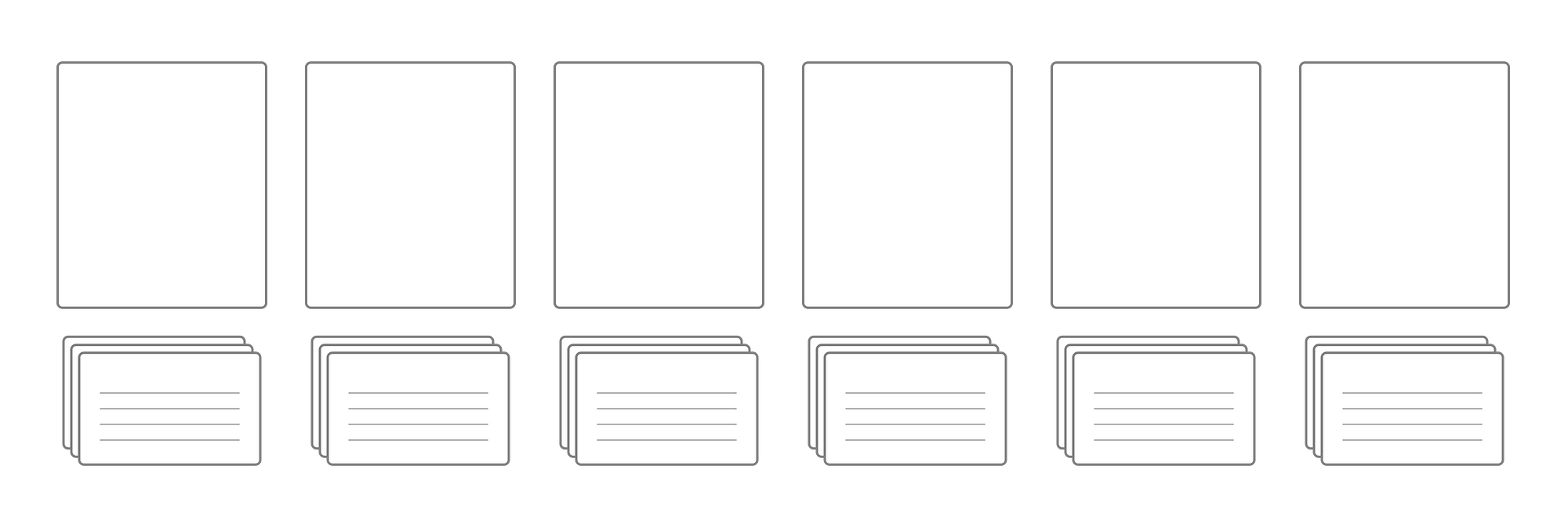
For the first group, finish the statement “I value …” with the main topic that sums up all the cards in the group.
The next step is to determine “why” you value this. A fun trick designers use to get to the core of any problem is asking “why” five times in a row. This can be challenging… But it works. You can learn more about the origins of this technique here.
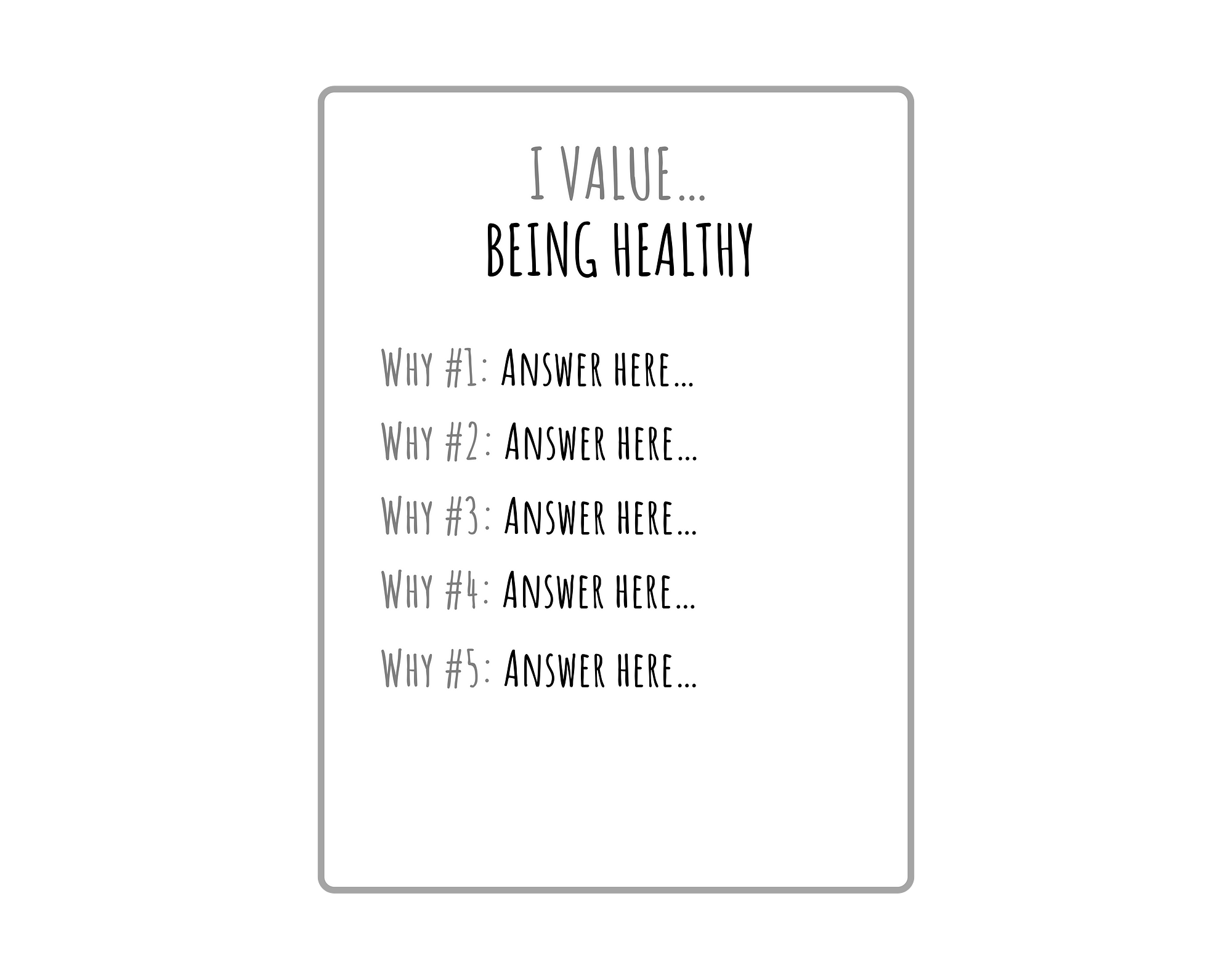
So, ask yourself “why” this is important to you and write down the answer on the piece of paper. Then ask yourself “why” again but this time answer in relation to your previous answer (very meta, I know). And do that again. And again… Until you’ve progressively asked yourself “why” 5 times in a row. The 4th and 5th “whys” can be really challenging. If you feel you’ve gotten to the root of the answer at “why” number 2 or 3 it’s OK to stop there. But challenge yourself to dig deeper.
Here’s an example:
I value “Being Healthy”
Why #1: Because I want to live a long life and feel good during it.
Why #2: Because I want to experience lots of things and enjoy them.
Why #3: Because experiencing new things opens my world view.
Why #4: Because an open world view helps me see the larger picture.
Why #5: Because seeing the larger picture makes me feel more connected.
See that!? A simple core value of “feeling healthy” transformed into something much deeper.
As you work through this process you may want to move some index cards around or create new groupings all together. That’s great! That’s the whole point of really digging in and challenging how you define what’s meaningful to you. Just make sure you have no more than 6 groups when you’re done.
Once you’ve finalized all the groups, labeled them and asked “why” 5 times you can move on to the next task.
Time required: 30–45 minutes
In the top right hand corner of each piece of paper (the one you answered “why” on) draw a shape or symbol. You can use whatever shapes or symbols you want but some easy ones are: Circle, Star, Triangle, Square, Spiral and a Cross.
Now, draw the same symbol in the top right corner of each index card for the group it’s in. Sorry, I know this can be a pain in the ass but I promise it will pay off. Do this for each grouping, each with a different symbol.
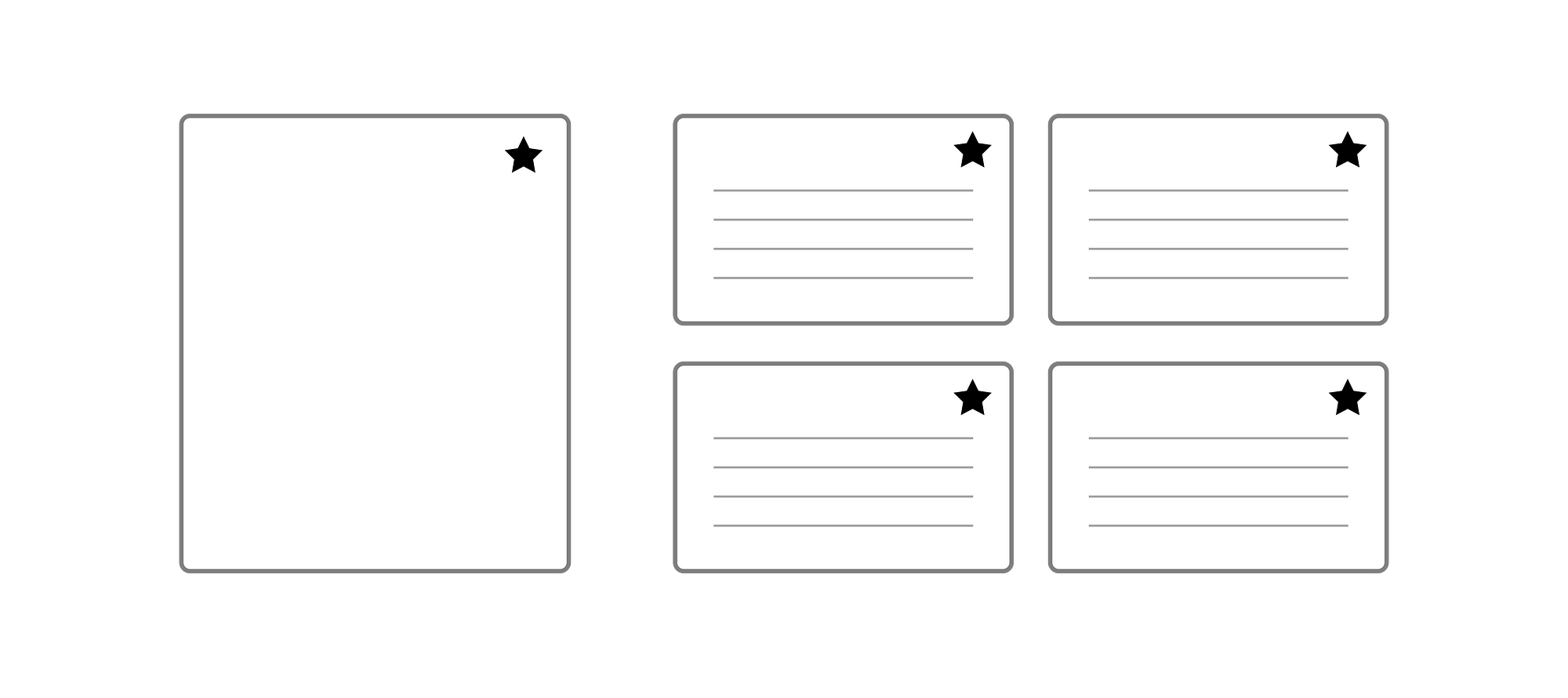
Now comes the fun part where we start to see some new connections! Combine all of the index cards into a single pile. Then, lay all the sheets of paper out in front of you.
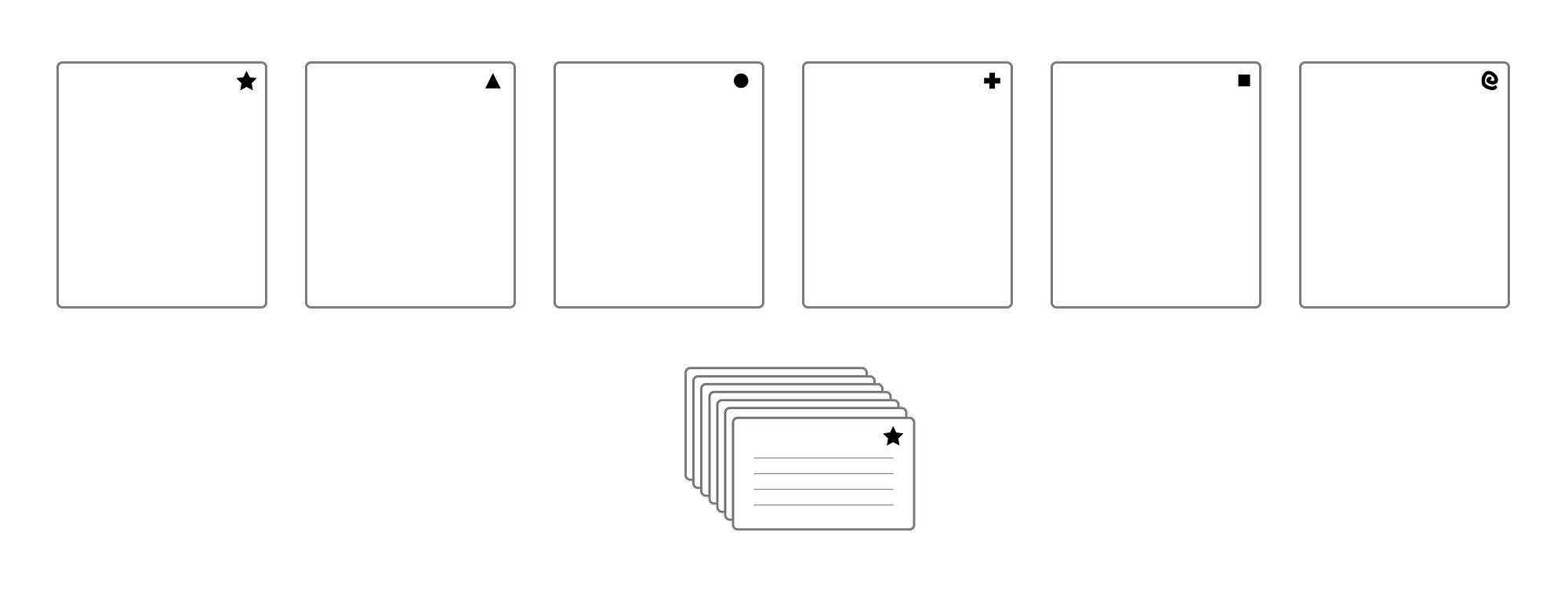
Pick up the first index card and look at it through the lens of each happiness principle. Does it fit in with any other groupings? It doesn’t need to be an exact fit but it should relate to at least one or two of the “why” answers you wrote down. If you see a connection, draw the happiness principle symbol on that index card as well. Do this for each card.

Time required: 5–10 minutes
Remember that score of 1–3 you gave to each index card? You’re going to add up the total score for each happiness principle (i.e. the total score of all index cards that have the same symbol). You should count each card separately for each principle.
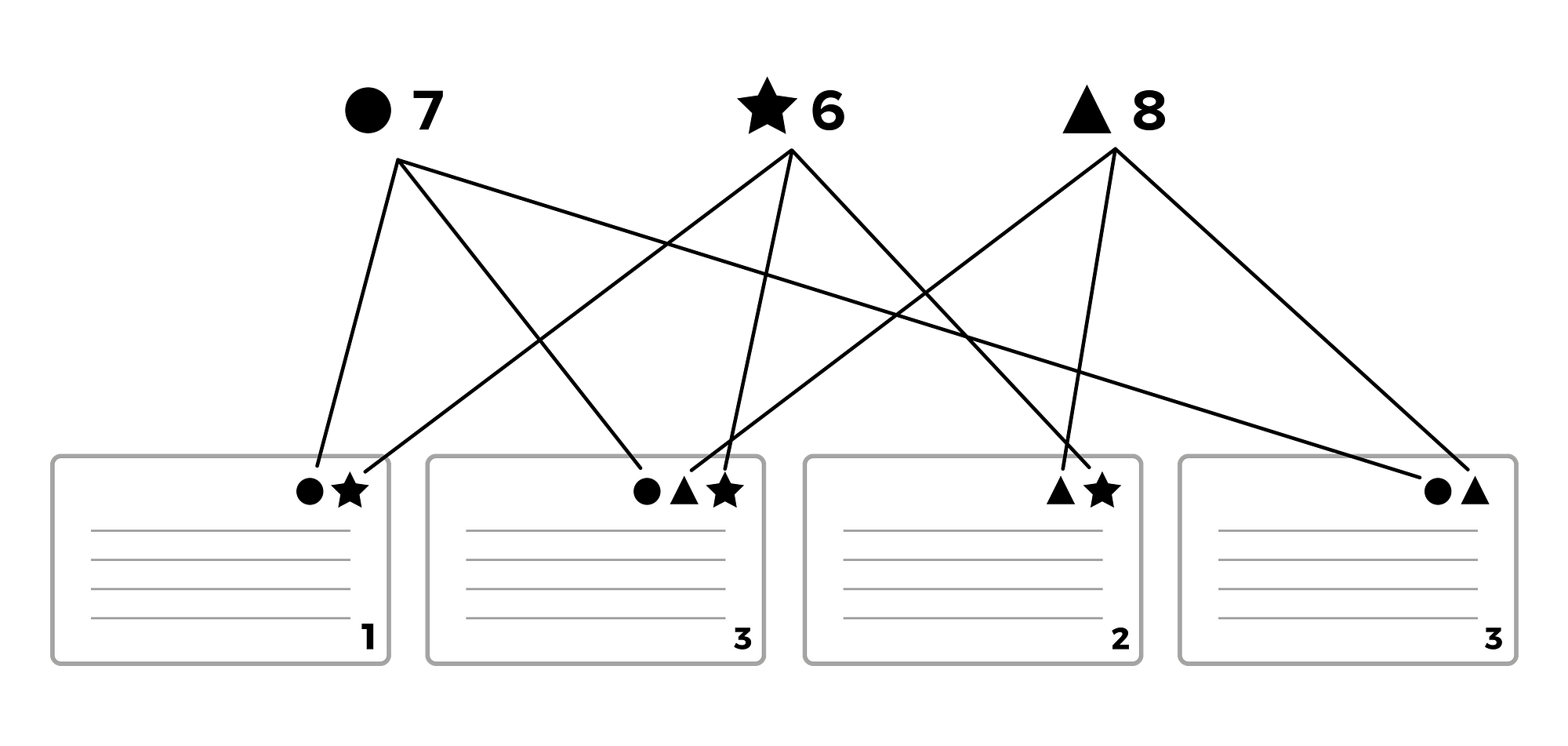
When you’ve finished adding up all the individual index cards, write the total score on the corresponding piece of paper with the happiness principle on it. When you’ve done this for each group, lay each happiness principle out in front of you with the highest value on left and the lowest on the right.

Look over all your happiness principles and make sure they seem correct to you. If they don’t, feel free to modify them as you see fit. Only you know what your true happiness principles are, this is just a process to help you discover them.
Time required: 1–5 minutes
The final step is to define your problem statement and frame it in a positive way. We’ll do this using a “how might we” question.
Grab a blank piece of paper and write out this statement:
“How might I create more experiences in my life that tap into my happiness principles of: (list of your happiness principles here)?”
Nice work! That was not a small effort. Next, we’ll take these insights and your “how might we” question and move on to the “Ideate” phase of the design process. In the ideate phase we’ll generate new and creative ways for you to utilize your happiness principles.
Did you enjoy this article?If so, hit the clap 👏 button a few times so others can see this post too!
AI-driven updates, curated by humans and hand-edited for the Prototypr community